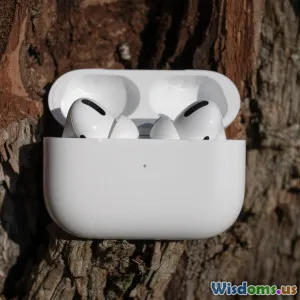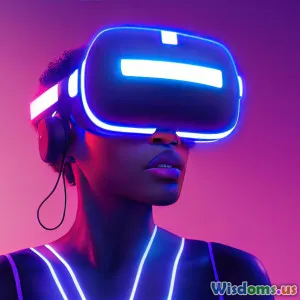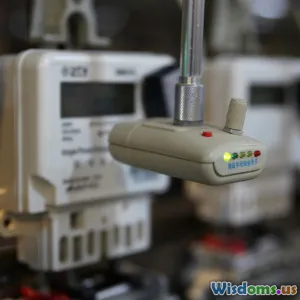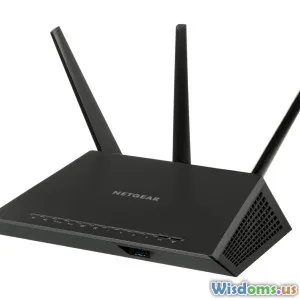Five Wearable Tech Trends Transforming Health in 2024
15 min read Discover five emerging wearable tech trends revolutionizing health and wellness in 2024. (0 Reviews)Five Wearable Tech Trends Transforming Health in 2024
The world of wearable technology is rapidly evolving, with 2024 marking a significant leap in how these sleek devices bridge the gap between daily routines and proactive, personalized health management. Gone are the days when wearables were limited to basic step tracking or counting calories. Today, innovation is accelerating at an unprecedented pace, fueled by artificial intelligence, sensor miniaturization, advanced analytics, and a deeper focus on holistic wellness. For both dedicated technophiles and those simply seeking a healthier life, the impact is real and more tangible than ever.
In this article, we'll explore five formidable trends in wearable tech that are reshaping health in 2024—examining their capabilities, real-world examples, and what they mean for you. From gadgets that anticipate illness to personalized mental wellbeing aids, these trends are not just changing healthcare—they're putting its power firmly onto your wrist, finger, or even embedded discreetly within your clothes.
AI-Driven Predictive Health Monitoring

Artificial intelligence (AI) is transforming wearables from passive reporting tools into active health guardians. In 2024, the hallmark of top-tier wearables is their predictive capacity—using continuous biometric monitoring combined with AI-powered algorithms to anticipate and warn users about health issues before symptoms arise.
How It Works
AI processes complex signals from an expanding array of sensors measuring heart rate variability, skin temperature, sleep patterns, blood oxygen, and more. By tracking longitudinal trends, it recognizes subtle fluctuations that would elude manual observation. For example, tiny deviations in your resting heart rate or oxygen saturation that match a viral infection profile, or perturbations in sleep cycles that flag increased stress levels.
Real-World Examples & Impact
- Apple Watch and Fitbit: Their latest models analyze multisensory data streams to deliver early alerts for atrial fibrillation, respiratory illnesses, and even potential falls.
- Oura Ring: Uses AI algorithms to forecast the likelihood of coming down with a cold or flu—days before you feel ill—by detecting changes in your temperature or heart rate patterns.
- Withings ScanWatch: Provides on-wrist notifications if cardiac arrhythmias are suspected, allowing for rapidly informed interventions.
Actionable Insights
- Customization: Advanced platforms enable users (and their care teams) to tailor which metrics are watched most closely, attuning alert sensitivity to health history and lifestyle.
- Early Intervention: By flagging trends early, AI-powered wearables encourage preventative steps—hydrating, resting, or even seeking medical advice—all before problems escalate.
This model isn't just about information, but about timely and actionable recommendations that can suppress illness progression, bring down hospital admissions, and potentially save lives.
Seamless Integration with Telehealth

2024 has cemented telehealth as an everyday experience, and wearables are its vital conduits. Integration between wearable devices and telehealth platforms now goes far beyond basic data uploads; today, they drive richer, more contextualized remote care.
How Integration Works
When a wearable detects concerning changes (like an irregular heartbeat or oxygen dip), relevant data is securely pushed in real-time to care providers. Patients can schedule video consultations with their physician directly within the wearable's companion app, sharing annotated biometric timelines, symptom diaries, and even contextual lifestyle notes.
Real-World Examples & Impact
- Fitbit Health Solutions—Used by health insurers and employers, this platform synchs continuous wearable data directly to healthcare providers, facilitating proactive outreach and streamlined virtual check-ups.
- AliveCor's KardiaMobile—A pocket-sized ECG device that captures medical-grade measurements, instantly sending data to telecardiology networks for rapid expert assessment.
Actionable Advice
- Choose devices with interoperability: Prioritize wearables compatible with standard electronic health record (EHR) platforms and telemedicine services.
- Use data tracking features: Log symptoms, medication use, or triggers that can enrich remote consultations and yield more accurate advice.
- Leverage health reminders: Many integrated systems now prompt users to follow pre-consultation advice or post-appointment action plans, keeping care continuous and effective.
Seamless telehealth integration means your health status isn't a mystery between appointments—it's an always-on dialogue with your care team, wherever you are.
Next-Generation Biometric Sensors
2024 has ushered in wearables equipped with some of the smallest, most sophisticated biometric sensors to date, revolutionizing both the breadth and granularity of data that can be collected non-invasively.
The Rise of Advanced Biosensing
Fingertip-sized devices now record not just steps or calories, but blood pressure, advanced ECG, metabolic health indicators, dehydration levels, and even blood glucose without punctures. This is largely thanks to breakthroughs in miniaturized optics, photonics, microfluidics, and nanomaterials.
Emerging Devices & What They Measure
- Dexcom G7 and Abbott’s FreeStyle Libre 3: Widely adopted continuous glucose monitors (CGMs), compatible with smartwatches and increasingly appearing in consumer markets for non-diabetics interested in metabolic optimization.
- Movano’s Evie Smart Ring: Targets women’s health, offering ovulation prediction, stress tracking, and hydration assessment through multiplexed sensors.
- Amazfit Balance: Integrates temperature, skin hydration, and even arterial stiffness data into its analytics suite, offering insights relevant to fitness buffs and those managing chronic conditions alike.
Tips to Maximize Value
- Opt for trial periods: New biosensors bring innovation, but try-before-you-buy programs help ensure data accuracy for your unique skin tone, biology, and activity level.
- Integrate third-party apps: Many advanced wearables work best when you combine their data with nutrition, exercise, or sleep logging apps for a more holistic insight.
- Ask about regulatory clearance: Seek wearables with FDA (or relevant regulatory) approval, especially when using them to monitor health conditions or inform therapy.
The rise of non-invasive, highly accurate sensors is truly game-changing—allowing millions to gain deeper, previously inaccessible insights into their bodies' hidden patterns every day.
Personalized Mental Health & Stress Management Tools

While physical health has long taken center stage, 2024 is witnessing a boom in wearables designed to nurture mental well-being. With workplace stress, sleep troubles, and anxiety on the rise, wearable devices now actively detect, support, and intervene in mental health challenges—providing discreet tools for resilience, emotional balance, and restful recovery.
Mind-Body Metrics in Action
- Detection: Devices track heart rate variability (HRV), galvanic skin response, skin temperature, and respiratory rate—sophisticated proxies for stress and emotional arousal.
- Guidance: In moments of rising stress (sensed via real-time metrics), wearables trigger haptic nudges, calming breathing guides, or gentle mindfulness exercises.
- Reflection: Detailed mood logs and emotional trend visualizations help users spot patterns—be it anxious Mondays, seasonal slumps, or post-meeting stress spikes.
Technology Making a Difference
- Muse Headband: Utilizes EEG sensors to measure brain wave activity, offering live biofeedback and guided meditation coaching for focus and tranquility.
- Samsung Galaxy Watch 6: Leverages AI to pair physiological and self-reported data, recommending breaks or relaxation activities precisely when needed.
- Hapbee: Worn around the neck, it emits ultra-low energy magnetic signals said to mimic the molecular shape of antidepressant, sleep, or focus compounds (scientific validation is underway but user interest is surging).
Tips for Healthy Adoption
- Choose empathy-first interfaces: Look for wearables that provide supportive, non-judgmental nudges rather than alarmist messaging.
- Integrate with therapists: Many wellness apps now allow data sharing directly with psychologists or counselors, enhancing precision support.
- Set boundaries: Mindfulness and mental health wearables are a tool, not a replacement for professional mental health care when needed. Use them as a bridge and aid, not a substitute.
With tens of millions struggling with stress and burnout, these tools are not only boosting personal wellbeing but fostering a broad culture shift toward mental fitness as “healthcare.”
Fashion and Comfort: The Age of Invisible Wearables
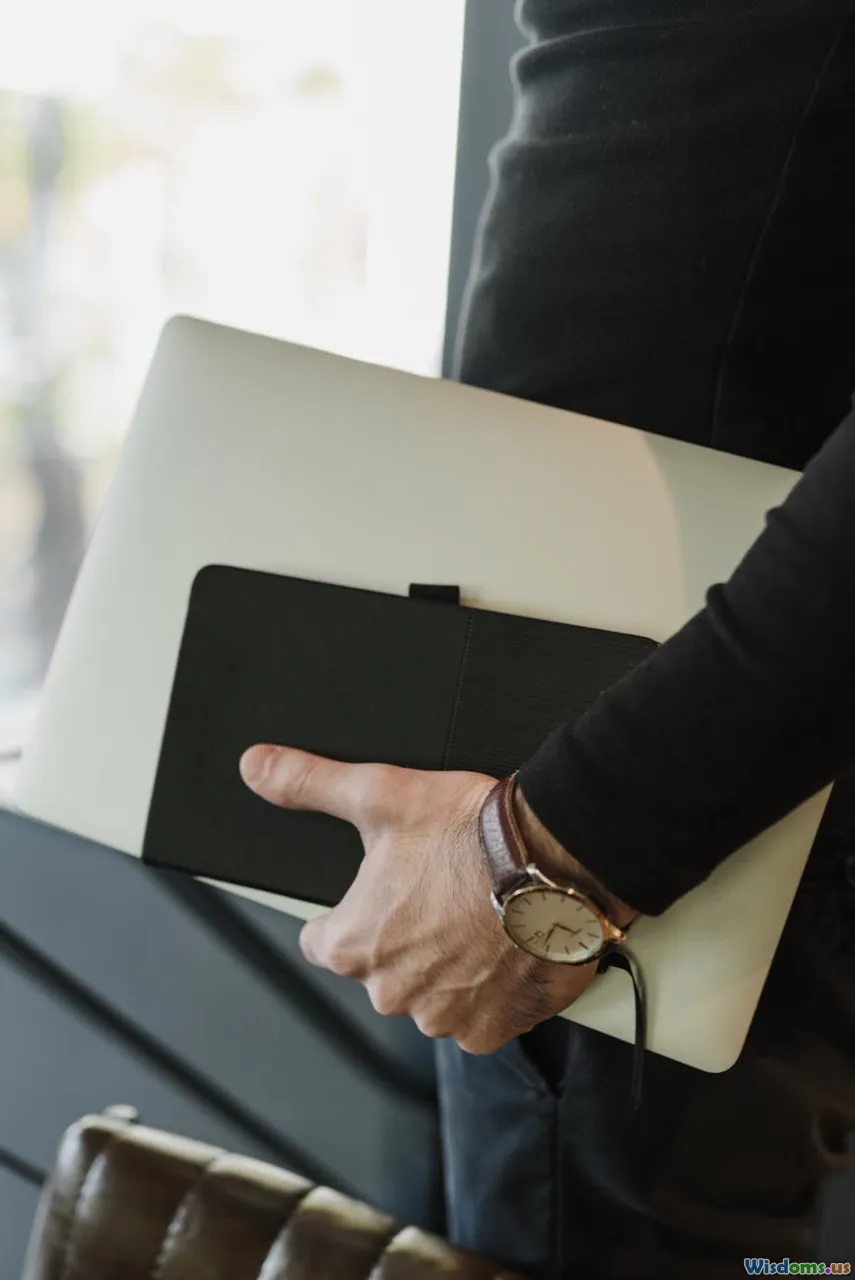
No longer confined to bulky wrist straps or obvious chest patches, the next generation of wearables in 2024 blends elegantly into everyday life—sometimes becoming indistinguishable from ordinary accessories or even clothing. This new wave, often described as "invisible" or fashion-forward wearables, addresses comfort, social stigma, and the desire for health tech that's as stylish as it is functional.
The Science of Smart Textiles and Miniaturization
Emerging companies are weaving flexible sensors into fabrics, integrating batteries and antennas that are imperceptible to the wearer. Necklaces, earrings, and rings designed in collaboration with fashion icons have exploded in popularity.
Standout Examples
- Circular Smart Ring: Offered in multiple colors and with swappable faceplates, it fits perfectly alongside traditional jewelry, tracking everything from sleep to blood oxygen.
- Supersapiens CGM Patches: Discreet, rounded, and designed for high-stakes athletes, they provide 24/7 glucose monitoring without cables or visible electronics.
- Siren Socks: Targeted at diabetics, these socks detect temperature irregularities indicative of foot ulcers—combining style with potentially limb-saving technology.
- Hexoskin Smart Shirts: Used by Olympians and astronauts alike, these shirts collect cardio-respiratory and movement data for both elite performance and remote disease management, all while being machine-washable and indistinguishable from regular sportswear.
Making It Work For You
- Prioritize fit and comfort: Opt for soft, breathable, and lightweight materials that don’t restrict movement or irritate skin.
- Explore personalization options: Many invisible wearables offer customizable looks, from metal finishes to fabric patterns.
- Assess battery life and durability: As devices become sleeker, compare how long they last between charges, and whether they withstand frequent washing or daily wear.
Invisible wearables are democratizing access—removing the health tech “badge” of decades past, and empowering everyone to track, learn, and optimize in a way that feels genuinely personal.
As wearable technology continues its remarkable evolution, these five trends prove that health tech is no longer just functional—it's intelligent, anticipatory, seamless, and designed for real human experiences. Whether through early illness warnings, frictionless virtual care, richer personal insights, or a marriage of style and substance, wearables in 2024 put individuals in command of their wellness. It’s an extraordinary era, and as the line between device and daily life continues to blur, the opportunity for healthier, more empowered living has never looked so good.
Rate the Post
User Reviews
Popular Posts











